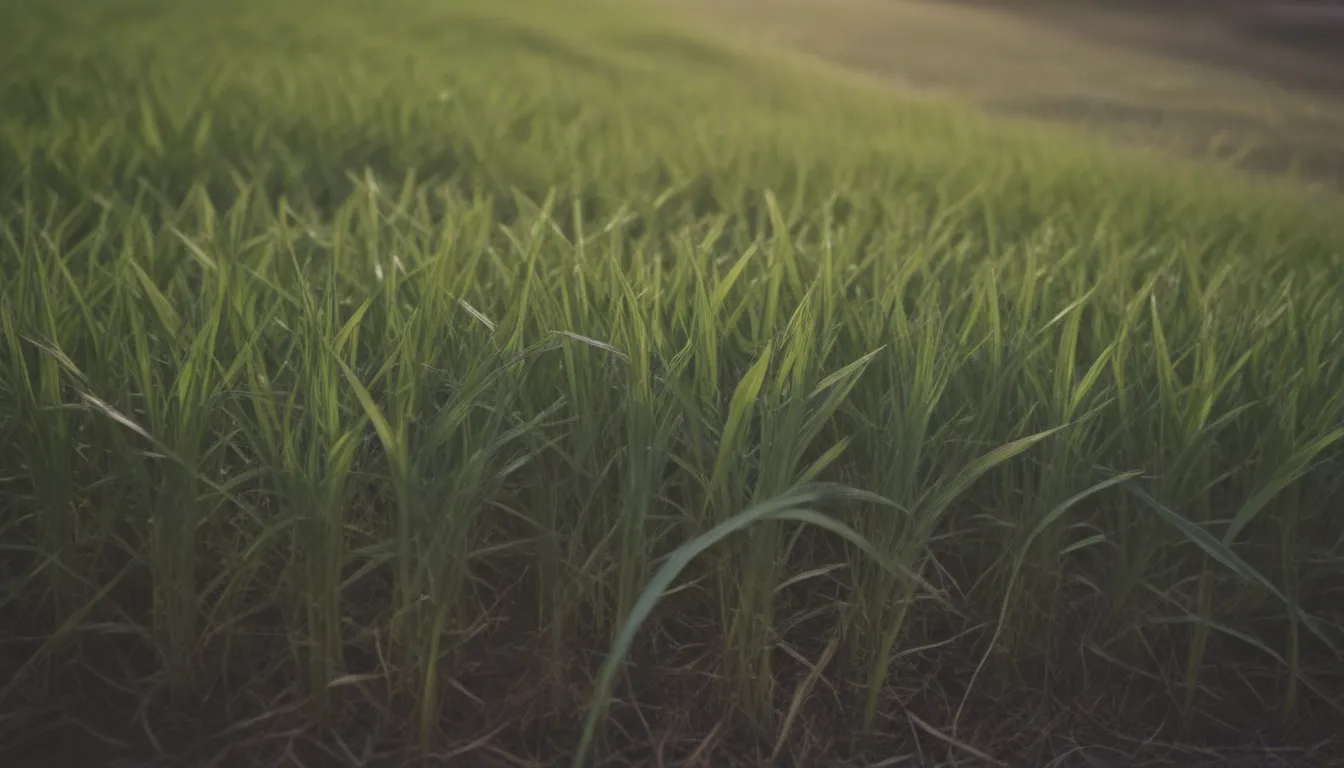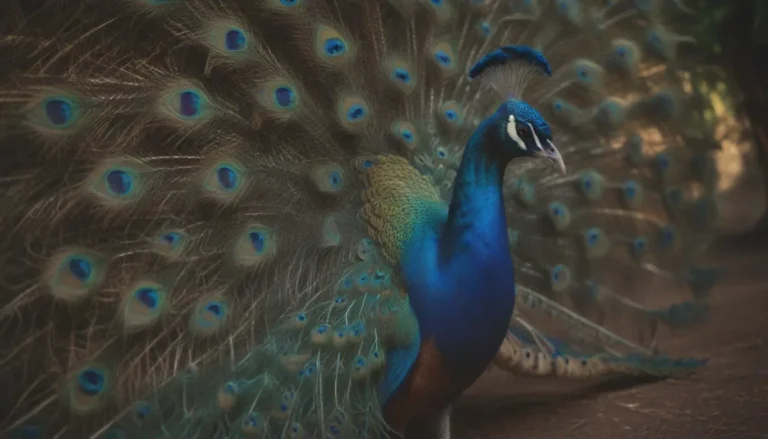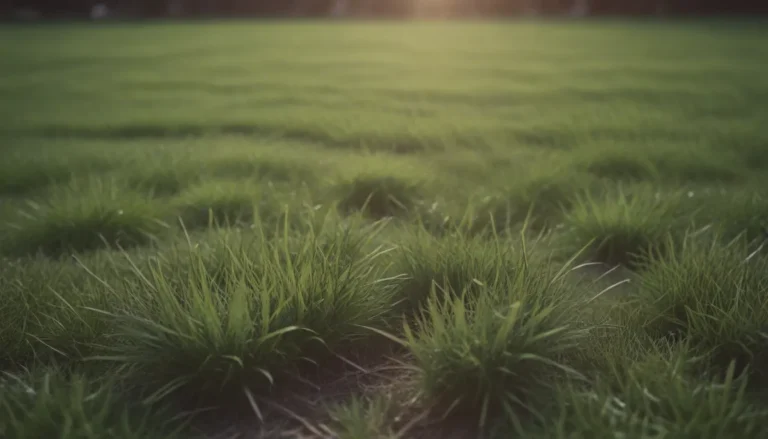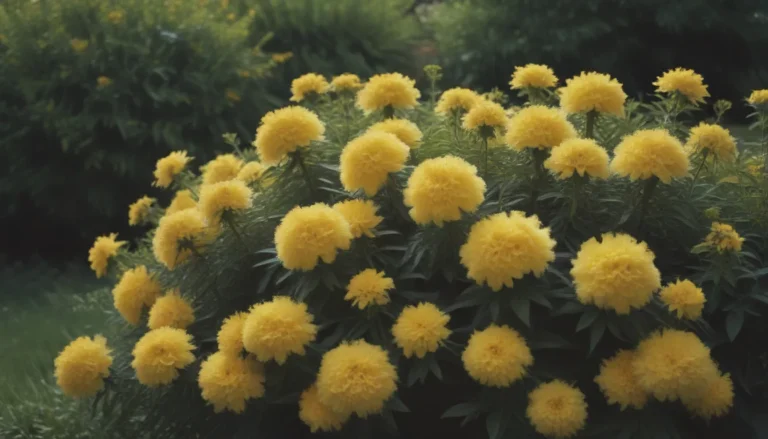Comprehensive Guide to Growing and Caring for St. Augustine Grass

If you’re looking to cultivate a lush, beautiful lawn in warm climates, St. Augustine grass might be the perfect choice for you. Also known as “buffalo grass,” this warm-season grass is a member of the Poaceae family and is known for its bluish-green color, wide flat blades, and low, creeping habit that allows it to form dense mats through stolons.
In this comprehensive guide, we will explore everything you need to know about growing and caring for St. Augustine grass. From understanding the differences between St. Augustine grass and Bermuda grass to tips on maintenance, fertilization, and handling common pests and diseases, this article will provide you with valuable information to help you achieve a vibrant lawn that you can be proud of.
St. Augustine Grass vs. Bermuda Grass
Before diving into the details of growing and caring for St. Augustine grass, it’s essential to understand the differences between St. Augustine grass and Bermuda grass. Both grasses thrive in warm climates, but there are key distinctions between the two:
- Shade tolerance: St. Augustine grass is more shade-tolerant compared to Bermuda grass.
- Cold tolerance: St. Augustine grass is more cold-resistant than Bermuda grass.
- Drought resistance: St. Augustine grass is moderately drought-tolerant once established.
- Fertilizer needs: St. Augustine grass performs best with regular fertilization.
- Propagation: St. Augustine grass is traditionally propagated through sod (plugs).
- Weed resistance: St. Augustine grass forms a dense mat that helps suppress weed growth.
- Salt resistance: St. Augustine grass is tolerant of salt, making it suitable for coastal areas.
- Cost difference: The cost of establishing and maintaining St. Augustine grass may vary.
St. Augustine Grass Care
While St. Augustine grass is relatively low-maintenance when it comes to mowing, there are still essential steps to ensure its health and vitality. Here are some tips for caring for your St. Augustine grass:
Light
- St. Augustine grass prefers full sun but can tolerate some shade.
- For optimal results, grow St. Augustine grass in full sun.
Soil
- Provide St. Augustine grass with well-drained garden loam for healthy growth.
Water
- Keep the soil evenly moist to promote healthy St. Augustine grass growth.
- Avoid extremes of too little or too much water.
- The grass is moderately drought-tolerant once established.
Temperature and Humidity
- St. Augustine grass thrives in heat and humidity, making it ideal for regions like the American Southeast.
Fertilizer
- Fertilize St. Augustine grass regularly with an all-purpose grass fertilizer.
- Follow the instructions on the fertilizer package for optimal results.
Types of St. Augustine Grass
There are several varieties of St. Augustine grass available, each with its unique characteristics. Some common types include:
- Floratine
- Floratam
- Seville
Propagating St. Augustine Grass
St. Augustine grass is typically propagated through sod, making it easy to establish a new lawn. Here’s how you can propagate St. Augustine grass:
- Plant sod pieces 1 to 2 feet apart and water consistently.
- The grass will spread quickly through its stolons, filling in gaps within the first year.
If you’re interested in growing St. Augustine grass from seed, keep in mind that viable seeds are rare and commercialization is limited. However, if you find St. Augustine grass seed, sow it in late spring to early summer and ensure the soil remains evenly moist for successful germination.
Overwintering
St. Augustine grass will turn brown in winter when soil temperatures drop below 60°F. This dormancy is natural, and the grass will revive when warmer weather returns. If you live in Zone 7 or higher, rest assured that your St. Augustine grass is not dead but merely dormant.
Common Pests & Diseases
St. Augustine grass is susceptible to pests and diseases that can impact its health and appearance. Two common issues to watch out for include:
Chinch Bugs
Chinch bugs can infest St. Augustine grass and inject toxins that impair the grass’s ability to absorb water, leading to its demise. To prevent chinch bug infestations, maintain proper lawn care practices, including:
- Ensuring adequate moisture levels.
- Removing thatch buildup.
Downy Mildew Disease
Downy mildew can affect St. Augustine grass, but you can prevent this disease by practicing good garden hygiene and maintaining a healthy lawn environment. St. Augustine grass’s vigorous growth and dense mat help in suppressing weed growth and maintaining a vibrant lawn.
In conclusion, growing and caring for St. Augustine grass requires attention to detail, but the rewards of a lush, vibrant lawn are well worth the effort. By following the guidelines outlined in this comprehensive guide, you can enjoy a beautiful lawn that enhances your outdoor space. Remember to provide your St. Augustine grass with proper care, including adequate sunlight, water, and fertilization, to ensure its health and longevity.





